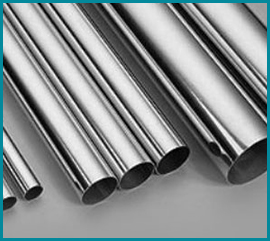views
Where high-temperature operations and corrosion resistance are concerned, stainless steel pipes and tubes are a top preference in most industries. Of the numerous grades out there, however, Stainless Steel 309, 310, and 310S are known to excel under harsh conditions. But how are they different from one another? And how can you be sure which one to use for your particular application?
In this guide, we cover the major differences between SS 309, 310, and 310S pipes and tubes, along with their most popular applications.
Let's learn the basics first before jumping into the differences.

All three grades—309, 310, and 310S—are austenitic stainless steels, meaning they possess a face-centered cubic crystal structure. This affords them superior strength, ductility, and resistance to scaling and oxidation at high temperatures. They also possess good formability and weldability.
The differences, however, are in chemical composition, temperature resistance, and carbon content, which have direct effects on their performance in certain environments.
???? Chemical Composition Comparison
Element\tSS 309\tSS 310\tSS 310S
Chromium (Cr) 22.0 – 24.0% 24.0 – 26.0% 24.0 – 26.0%
Nickel (Ni) 12.0 – 15.0% 19.0 – 22.0% 19.0 – 22.0%
Carbon (C) ≤ 0.20% ≤ 0.25% ≤ 0.08%
Iron (Fe) Balance Balance Balance
From the above table, you can observe:
310 has the highest content of chromium and nickel, providing the best oxidation resistance and strength at high temperatures.
309 has a little less nickel, which is more cost-saving but still provides high-temperature strength.
310S is the low-carbon counterpart of 310 and minimizes the chances of sensitization (intergranular corrosion) when welding or exposed to extended heat.
???? Temperature Resistance
SS 309: Good oxidation resistance up to 1900°F (1038°C).
SS 310: Excellent up to 2100°F (1149°C).
SS 310S: Equally good as 310 in heat resistance but with superior weldability with reduced carbon.
For extreme heat settings like furnaces or heat treatment equipment, 310 or 310S is usually used over 309.
????️ Principal Uses
Here's where each grade excels:
✅ SS 309 Pipes & Tubes
Parts for furnaces
Boiler baffles
Heat exchangers
Kiln liners
Thermal processing equipment
✅ SS 310 Pipes & Tubes
Chemical processing equipment
High-temperature furnace components
Heat treatment trays and baskets
Power plant equipment
Jet engine components
✅ SS 310S Pipes & Tubes
Uses where welding is done frequently
Petrochemical processing
Food processing in high temperature settings
Pharmaceutical production lines
The low carbon content of 310S reduces carbide precipitation during welding, making it a good choice for applications involving forming or joining.
???? 309 vs 310 vs 310S – Quick Summary
Feature SS 309 SS 310 SS 310S
Heat Resistance High Very High Very High
Corrosion Resistance Moderate High High
Carbon Content Standard Higher Lower
Weldability Good Good Excellent
Cost More Affordable Premium Slightly Less than 310
???? Choosing the Right Grade
The decision between 309, 310, and 310S stainless steel pipes and tubes comes down to:
Operating temperature
Corrosion environment
Welding requirements
Budget
For general high-temperature resistance with a cost-effective edge, SS 309 is a good choice.
For top performance in intense heat, SS 310 is the unbeatable choice.
And for weld-heavy use with comparable performance, SS 310S is your best bet.
✅ Conclusion
All of these stainless steel grades, 309, 310, and 310S, possess distinct strengths, which render them appropriate for a range of demanding conditions. Knowing the distinction between them ensures you're making the right material choice for durability, performance, and safety in your application.
Planning to procure SS 309/310/310S tubes and pipes? Ensure you work with a reliable supplier who can advise you according to your particular application requirements.






















Comments
0 comment